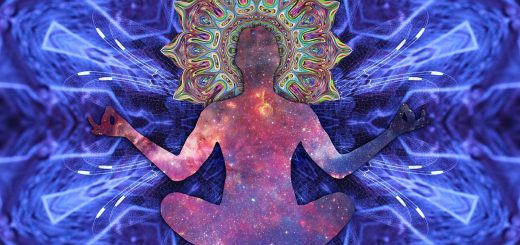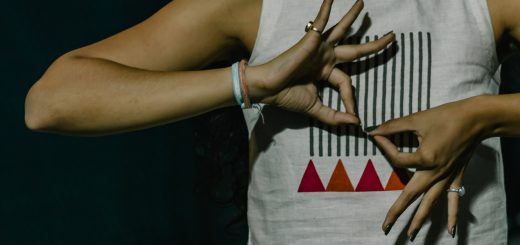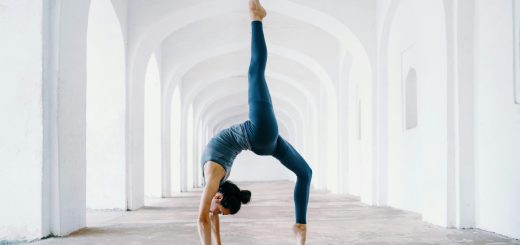Yin Yoga Poses for Deep Stretching and Relaxation

Before diving in, please note: This post is for informational purposes only. If you’d like to know more about how we approach topics, feel free to check out our friendly Disclaimer Page.
Hey there, amazing readers! 🖐️ Just a quick note: yes, we know there are a lot of ads here. Trust us, we get it—it’s not the prettiest look, but they help us keep this blog alive and kicking. Those pesky little ads cover the costs of all the behind-the-scenes magic, from hosting and tech stuff to creating content we hope you’ll love.
We’re committed to delivering quality posts, and your support (even just sticking around despite the ads) means everything to us. So, bear with us, and thanks for helping us keep the good vibes rolling. Now, on to the fun stuff! 😉
TRANSLATE BUTTON AT THE END OF THE ARTICLE
A Quick Overview
Yin Yoga is a slow-paced style of yoga that focuses on holding passive poses for an extended period, typically ranging from 45 seconds to five minutes or more.
This practice targets the deep connective tissues, such as ligaments, tendons, and fascia, to increase flexibility and promote relaxation.
Unlike more dynamic styles of yoga, Yin Yoga encourages practitioners to find stillness in each pose, allowing for a deeper stretch and a meditative experience.
In this article, we will explore the benefits of Yin Yoga, how it differs from other styles of yoga, beginner poses to get started, deep stretching poses to enhance flexibility, and tips for a successful practice.
Introduction to Yin Yoga
Yin Yoga is based on the Taoist concept of yin and yang, where yin represents stillness and relaxation, while yang represents movement and activity.
In Yin Yoga, poses are held for a longer duration to target the deeper tissues of the body, promoting relaxation and releasing tension.
This practice helps to improve flexibility, increase circulation, and calm the mind.
It is a perfect complement to more vigorous styles of yoga and other physical activities.
Benefits of Yin Yoga Poses
Improved Flexibility: Holding poses for an extended period allows for a deeper stretch, increasing flexibility in the joints and muscles.
Stress Relief: The slow pace and focus on breath in Yin Yoga help to calm the nervous system, reducing stress and anxiety.
Enhanced Circulation: Holding poses stimulates blood flow to different parts of the body, promoting better circulation and oxygenation of tissues.
Joint Health: Yin Yoga targets the connective tissues around the joints, improving mobility and reducing the risk of injury.
Emotional Release: Holding poses can release stored emotions and tension in the body, promoting emotional well-being.
How Yin Yoga Differs from Other Styles
Yin Yoga differs from more dynamic styles of yoga, such as Vinyasa or Ashtanga, in several ways:
Intensity: Yin Yoga focuses on passive stretching and relaxation, while other styles may involve more active movements and poses.
Duration: Poses in Yin Yoga are held for a longer period, typically three to five minutes, compared to the shorter holds in other styles.
Targeted Tissues: Yin Yoga targets the deep connective tissues, such as ligaments and fascia, while other styles may focus on muscles.
Mental Focus: Yin Yoga encourages practitioners to find stillness and a meditative state, promoting a deeper sense of relaxation and awareness.
Yin Yoga Poses for Beginners
Child’s Pose: Start by kneeling on the mat, then slowly lower your torso towards the ground with arms extended in front for a gentle stretch in the back and hips.
Butterfly Pose: Sit with the soles of your feet together, knees out to the sides, and gently fold forward to stretch the inner thighs and groin.
Sphinx Pose: Lie on your belly with forearms on the mat, elbows under shoulders, and lift the chest for a gentle backbend to stretch the spine.
Deep Stretching Poses in Yin Yoga
Dragon Pose: From a lunge position, lower the back knee to the ground and sink the hips forward to stretch the hip flexors and quadriceps.
Saddle Pose: Sitting on the heels, lower back onto the mat with arms extended overhead to stretch the thighs, hips, and lower back deeply.
Relaxation and Meditation in Yin Yoga
In Yin Yoga, relaxation and meditation are essential components of the practice.
Holding poses for an extended period allows practitioners to find stillness in the body and mind, promoting relaxation and stress relief.
During the practice, focus on deep breathing and mindfulness to enhance the meditative experience.
Incorporating relaxation techniques, such as visualization or body scanning, can deepen the sense of relaxation and inner awareness.
Target Areas for Yin Yoga Poses
Yin Yoga targets the deep connective tissues of the body, including:
Hips: Poses such as Pigeon Pose and Square Pose target the hips to improve flexibility and release tension.
Spine: Poses like Cat-Cow and Sphinx Pose stretch the spine to promote mobility and reduce back pain.
Shoulders: Thread the Needle and Eagle Arms poses target the shoulders and upper back to release tension and improve posture.
Props to Enhance Yin Yoga Poses
Using props can enhance the effectiveness of Yin Yoga poses and provide support for practitioners:
Yoga Blocks: Blocks can be used to support the body in poses where flexibility is limited, such as in Forward Fold or Butterfly Pose.
Blankets: Blankets can provide cushioning and support for the body in reclined poses, such as Savasana or Reclining Butterfly Pose.
Bolsters: Bolsters can be used to elevate the hips or support the back in poses like Child’s Pose or Supported Fish Pose.
Holding Poses for Long Periods
In Yin Yoga, poses are typically held for three to five minutes or longer to target the deep tissues of the body.
When holding a pose for an extended period, focus on breathing deeply and relaxing into the stretch.
It is normal to experience discomfort or sensation in the body, but avoid any sharp pain.
Listen to your body and adjust the pose or use props as needed to find a comfortable edge without pushing too far.
Breathing Techniques in Yin Yoga
Breath awareness is essential in Yin Yoga to promote relaxation and mindfulness.
Focus on slow, deep breaths in and out through the nose to calm the nervous system and deepen the stretch.
Use the breath to guide your movement and release tension with each exhale.
Practicing ujjayi breath, a gentle oceanic sound created by constricting the back of the throat, can help to maintain focus and presence throughout the practice.
Tips for a Successful Yin Yoga Practice
Listen to Your Body: Pay attention to how your body feels in each pose and adjust as needed to find a comfortable stretch.
Stay Present: Focus on your breath and stay present in the moment to deepen the meditative experience.
Be Patient: Allow yourself time to relax into each pose and avoid rushing through the practice.
Stay Hydrated: Drink plenty of water before and after your practice to support flexibility and circulation.
Ending Your Yin Yoga Session
To end your Yin Yoga session, slowly transition out of the last pose and come into a comfortable seated position.
Take a moment to pause and notice how your body and mind feel after the practice.
Close your practice with a few minutes of relaxation in Savasana, allowing your body to fully absorb the benefits of the practice.
Take this time to express gratitude for your body and the time you dedicated to self-care through Yin Yoga.
Conclusion
Yin Yoga offers a unique and deeply relaxing practice that targets the deep connective tissues of the body, promoting flexibility, relaxation, and stress relief.
By incorporating long holds, breath awareness, and mindfulness, practitioners can experience both physical and mental benefits from this gentle yet powerful style of yoga.
Whether you are a beginner or an experienced yogi, Yin Yoga can provide a valuable addition to your wellness routine, helping you find balance and inner peace in a fast-paced world.
Incorporate these Yin Yoga poses and tips into your practice to deepen your stretches, enhance relaxation, and cultivate a sense of well-being.

The Enlightenment Journey is a remarkable collection of writings authored by a distinguished group of experts in the fields of spirituality, new age, and esoteric knowledge.
This anthology features a diverse assembly of well-experienced authors who bring their profound insights and credible perspectives to the forefront.
Each contributor possesses a wealth of knowledge and wisdom, making them authorities in their respective domains.
Together, they offer readers a transformative journey into the realms of spiritual growth, self-discovery, and esoteric enlightenment.
The Enlightenment Journey is a testament to the collective expertise of these luminaries, providing readers with a rich tapestry of ideas and information to illuminate their spiritual path.
Our Diverse Expertise 🌟
While our primary focus is on spirituality and esotericism, we are equally passionate about exploring a wide range of other topics and niches 🌍📚. Our experienced team is dedicated to delivering high-quality, informative content across various subjects ✨.
To ensure we provide the most accurate and valuable insights, we collaborate with trusted experts in their respective domains 🧑🏫👩🏫. This allows us to offer well-rounded perspectives and knowledge to our readers.
Our blog originally focused on spirituality and metaphysics, but we’ve since expanded to cover a wide range of niches. Don’t worry—we continue to publish a lot of articles on spirituality! Frequently visit our blog to explore our diverse content and stay tuned for more insightful reads.






